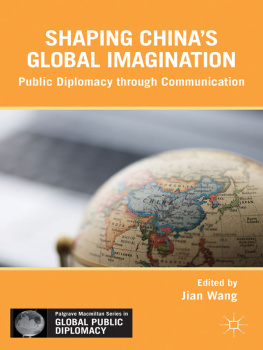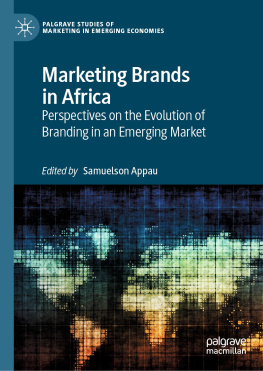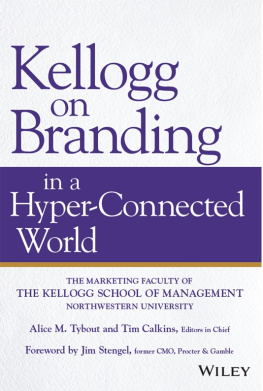Palgrave Macmillan Series in Global Public Diplomacy
Series Editors:
Kathy Fitzpatrick, Quinnipiac University, USA
Philip Seib, University of Southern California, USA
Advisory Board:
Nicholas J. Cull, University of Southern California, USA
Teresa LaPorte, University of Navarre, Spain
Donna Lee, University of Kent, United Kingdom
Jan Melissen, Netherlands Institute of International Relations Clingendael and University of Antwerp, Belgium
Abeer Najjar, American University of Sharjah, United Arab Emirates
William A. Rugh, Former US Ambassador to Yemen and United Arab Emirates, USA
Cesar Villanueva Rivas, Universidad Iberoamericana, Mexico
Li Xiguang, Tsinghua University, China
At no time in history has public diplomacy played a more significant role in world affairs and international relations. As a result, global interest in public diplomacy has escalated, creating a substantial academic and professional audience for new works in the field.
This series examines theory and practice in public diplomacy from a global perspective, looking closely at public diplomacy concepts, policies, and practices in various regions of the world. The purpose is to enhance understanding of the importance of public diplomacy, to advance public diplomacy thinking, and to contribute to improved public diplomacy practices.
The editors welcome submissions from scholars and practitioners representing a range of disciplines and fields (including diplomacy, international relations, international communications, public relations, political science, global media, marketing/advertising) and offering diverse perspectives. In keeping with its global focus, the series encourages nonUS-centric works and comparative studies.
Published by Palgrave Macmillan:
Toward a New Public Diplomacy: Redirecting U.S. Foreign Policy
Edited by Philip Seib
Soft Power in China: Public Diplomacy through Communication
Edited by Jian Wang
Public Diplomacy and Soft Power in East Asia
Edited by Sook Jong Lee and Jan Melissen
The Practice of Public Diplomacy: Confronting Challenges Abroad
Edited by William A. Rugh
The Decline and Fall of the United States Information Agency: American Public Diplomacy, 19892001
Nicholas J. Cull
Beyond Cairo: US Engagement with the Muslim World
Darrell Ezell
Collaborative Public Diplomacy: How Transnational Networks Influenced American Studies in Europe
Ali Fisher
Religion and Public Diplomacy
Edited By Philip Seib
Communicating Indias Soft Power: Buddha to Bollywood
Daya Kishan Thussu
European Public Diplomacy: Soft Power at Work
Edited By Maia K. Davis Cross and Jan Melissen
The United States and the Challenge of Public Diplomacy
James Thomas Snyder
Shaping Chinas Global Imagination: Branding Nations at the World Expo
Jian Wang
Shaping Chinas Global Imagination
Branding Nations at the World Expo
Jian Wang


SHAPING CHINAS GLOBAL IMAGINATION
Copyright Jian Wang, 2013.
All rights reserved.
First published in 2013 by PALGRAVE MACMILLAN in the United Statesa division of St. Martins Press LLC, 175 Fifth Avenue, New York, NY 10010.
Where this book is distributed in the UK, Europe and the rest of the world, this is by Palgrave Macmillan, a division of Macmillan Publishers Limited, registered in England, company number 785998, of Houndmills, Basingstoke, Hampshire RG21 6XS.
Palgrave Macmillan is the global academic imprint of the above companies and has companies and representatives throughout the world.
Palgrave and Macmillan are registered trademarks in the United States, the United Kingdom, Europe and other countries.
ISBN: 9781137361714
Library of Congress Cataloging-in-Publication Data is available from the Library of Congress.
A catalogue record of the book is available from the British Library.
Design by Newgen Knowledge Works (P) Ltd., Chennai, India.
First edition: December 2013
10 9 8 7 6 5 4 3 2 1
To the memory of my mother
C O N T E N T S
I L L U S T R A T I O N S
Figures
Tables
P R E F A C E
This book explores the idea of nation brandingwhat it is and how it worksthrough an instructive case of the Expo Shanghai 2010, where 190 countries put up national displays vying for the attention of a predominantly Chinese audience. Despite the growing interest in how countries promote their national image, the potential and role of branding in a nations external communication has often been assumed but not demonstrated. The academic treatment of the subject has been narrow and cursory. Empirical work has lagged behind conceptual discussion. This book reflects an effort to provide conceptual clarity and empirical attention to this very issue. As nation-branding activities will only increase in the coming years, this project is intended to help form a basis for future inquiry.
Given that the Shanghai Expo became the largest such gathering in expo history, there are two important subtexts of this exploration: the role of soft power in Chinas rise in the world, and the World Expo as an enduring historical, cultural institution. The project sheds light on these two themes as well.
As the renowned British historian J. H. Elliott has observed, temperament, upbringing, chance and calculation all come into play in our choosing of a subject matter for study. Indeed, I came upon the topic of this book by both happenstance and planning. I have been interested in examining the intersection between managing a nations image in the context of global relations and marketing communication concepts and practices. My inquiry is applied but draws on multiple disciplines of knowledge. It is also informed by my professional experience as a communications practitioner and my personal experience in a multicultural, multilingual environment. I was looking for a specific case example that would allow me to explore and explain in a systematic way the phenomenon of what is now commonly known as nation branding. About three years ago, one of my graduate students brought to my attention the mega-event of the World Expo where countries pursue national promotion to the broad global society. At the time I had only a very vague notion of what the expo was all about. Like many people, I thought it was anachronistic. But as I started to look into it, I came to realize that not only did the expo have a storied, fascinating past but it was currently attracting greater attention among the emerging economies and the developing world. As I had just completed editing a volume examining Chinas public diplomacy efforts, I decided to turn my attention to the upcoming World Expo in Shanghai and research the underlying pactice of national promotion at this event.
The project unfolded with a sense of constant discoveryabout the World Expo, the linkages between branding and a nations image, and the evolving Chinese worldviews as the country expands its global presence. Although it is impossible to fully capture in this book the magnitude and influence of the Shanghai Expo, I hope to have provided a partial, yet important, understanding of the event and the implications for branding and communication practices in projecting a nations image on the world stage.
***
Many people helped in the researching and writing of the book. I am indebted to the many representatives of the national pavilions in Shanghai, the Shanghai Expo bureau, and the Bureau International des Expositions for sharing their perspectives and giving me access to the pavilions and events. I owe special thanks to those who granted me interviews as noted in the book. I am grateful to Cesar Corona for introducing me to the topic and then providing superb research assistance along the way. I had excellent research support from several other USC graduate students including Chen Chen, Di Wu, Shan Yuan, and Daniel Lee. I am thankful to Shaojing Sun of Fudan University and his research assistant Chuanbo Liu for providing invaluable support in the logistics and analysis of the survey conducted at the pavilions. I benefited from many stimulating converations with Antoine Bourdeix, who was unfailingly generous with his . Farideh Koohi-Kamali, her assistant Isabella Yeager, and the production team at Palgrave Macmillan were most helpful in guiding me through the process. A special note of thanks to David McElwee for his careful reading of the manuscript and encouragement throughout the project.
Next page
















